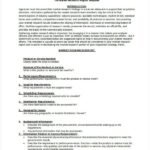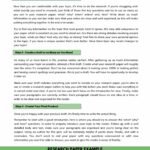research report guidelines

Introduction to Research Report Guidelines
Navigating the landscape of research can often feel like embarking on a labyrinthine journey, filled with intricate twists and turns. Whether you are an aspiring scholar or an experienced researcher, the clarity of your report can significantly influence how your findings are perceived and understood. The art of crafting a well-structured research report is not merely about presenting data; it’s about weaving a coherent narrative that guides your reader through your investigative odyssey.
In this article, we will explore essential guidelines that serve as a compass for compiling research reports effectively. From the importance of a compelling introduction that sets the stage for your findings to the thoughtful organization of your sections, these guidelines are designed to facilitate clear communication of your research objectives and outcomes. Discover how to enhance the readability and impact of your reports, ensuring your valuable insights resonate with your audience. Whether you aim for publication, presentation, or academic evaluation, mastering these guidelines is pivotal to your success in the world of research.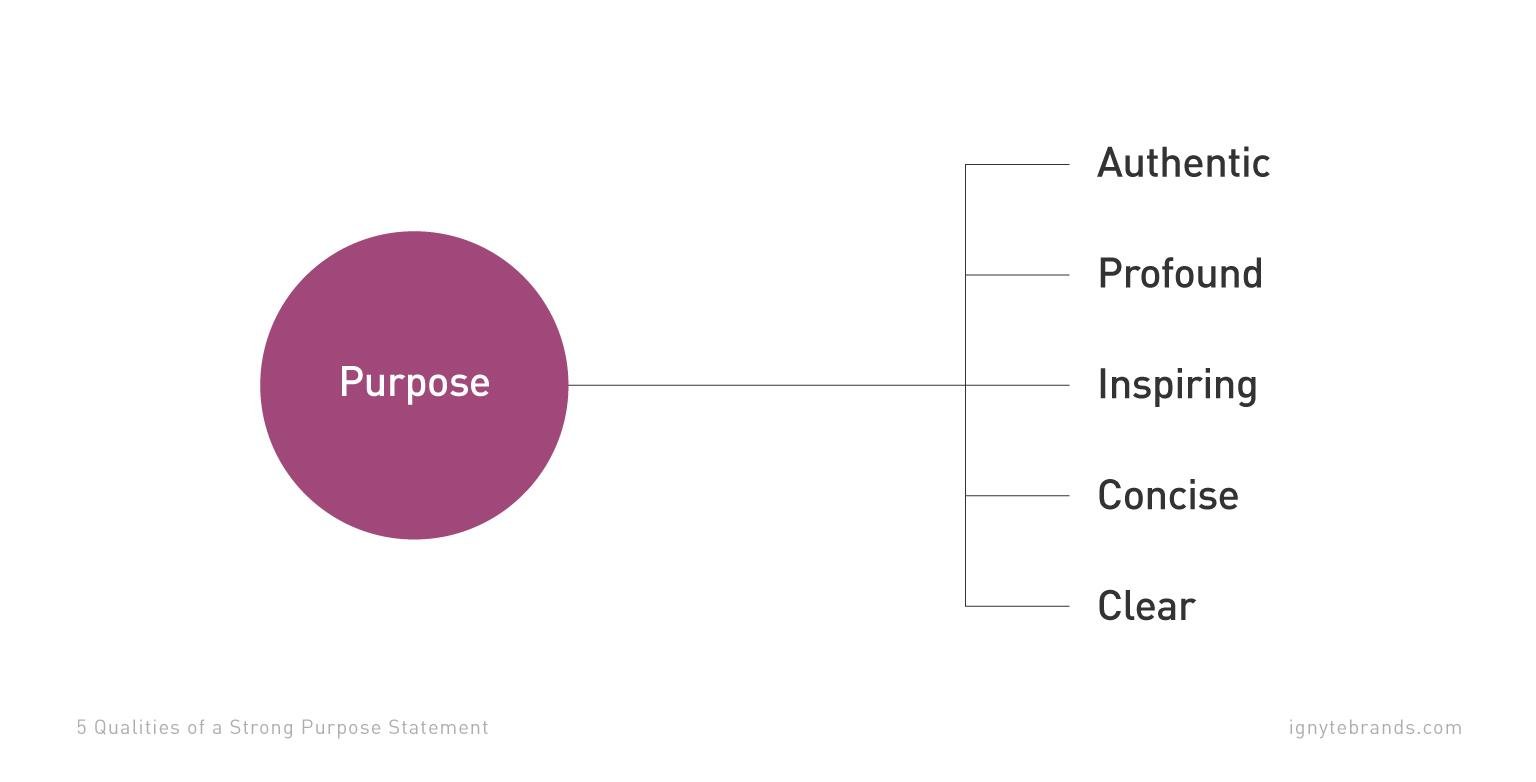
Crafting a Clear Purpose Statement for Effective Research Reports
For any research report, a well-articulated purpose statement is essential to guide the study’s direction and focus. This statement should clearly define the key objectives and anticipated outcomes of the research. To achieve this, consider incorporating the following elements:
- Clarity: Use straightforward language that clearly expresses the intent of the research.
- Specificity: Detail what the research aims to explore or solve.
- Relevance: Ensure it reflects the importance and significance of the study within the broader context.
Moreover, a compelling purpose statement can inspire engagement and facilitate understanding among readers and stakeholders. It serves as a touchstone throughout the research process. Here are a few guiding questions to refine your purpose statement:
- What question am I trying to answer?
- Who will benefit from this research?
- What impact do I hope to achieve?
By integrating these components into your purpose statement, you can enhance the overall effectiveness of your research report, ensuring it resonates with your intended audience.
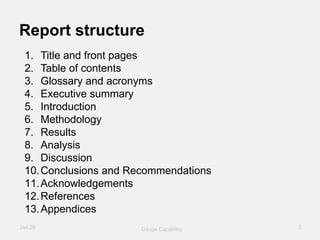
Structuring Your Report: Essential Elements and Best Practices
When structuring a research report, it’s crucial to incorporate essential elements that guide the reader seamlessly through your findings. Your report should commonly include a Title Page, Abstract, Introduction, Methods, Results, and Discussion. Each section serves a purpose; for instance, the Abstract summarizes the key points succinctly, while the Methods section outlines how the research was conducted, ensuring reproducibility. Furthermore, be sure to include a References section to credit sources accurately and a Appendix for supplementary materials if necessary.
In terms of best practices, consider the following tips to enhance the clarity and flow of your report:
- Use clear headings and subheadings to break up content.
- Ensure that your findings are presented in a logical sequence.
- Incorporate visual aids, such as charts and graphs, to complement your data.
- Maintain a consistent formatting style throughout to improve readability.
Here is a concise table illustrating the components and their respective purposes:
| Component | Purpose |
|---|---|
| Title Page | Introduces the report |
| Abstract | Summarizes the report |
| Introduction | Sets context and objectives |
| Methods | Describes research methodology |
| Results | Presents findings |
| Discussion | Interprets and explains findings |
| References | Credits sources |
| Appendix | Provides additional materials |
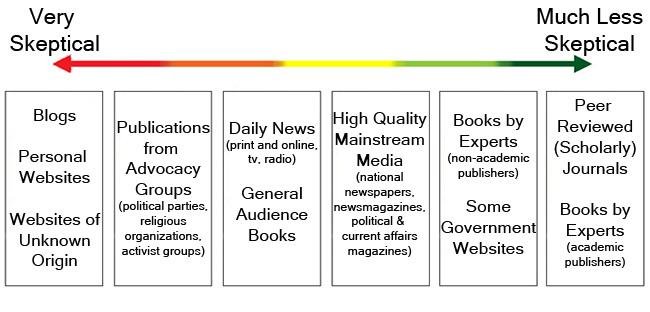
Incorporating Credible Sources: Strategies for Valid Research
When diving into the research process, identifying and incorporating credible sources is paramount for establishing a solid foundation for your findings. Begin by focusing on peer-reviewed journals, which undergo rigorous evaluation by experts in the field before publication. Additionally, consider the authority and bias of your sources. Look for information produced by established institutions, recognized experts, or reputable organizations to ensure that your content is grounded in trustworthiness. Utilize databases such as blank”>JSTOR or blank”>Google Scholar for finding scholarly articles that contribute to a well-rounded argument.
To further validate your research, apply the following strategies for assessing sources:
- Check publication date: Ensure the information is current and relevant to your research scope.
- Examine citations: A source that cites other reputable work adds to its credibility.
- Review author credentials: Understand who is behind the research and their qualifications.
- Identify funding sources: Knowing who finances the research can reveal potential biases affecting the outcomes.
| Source Type | Credibility Indicator |
|---|---|
| Peer-reviewed Journal | High - Rigorous evaluation process |
| Government Publications | Moderate to High - Based on evidence and research |
| News Articles | Variable – Check author’s credentials and publication reputation |
| Blogs and Personal Websites | Low - Often lacks rigorous review; verify author’s expertise |

Polishing Your Final Draft: Tips for Clarity and Precision
When refining your research report, clarity is paramount. Begin by revisiting your paragraphs to ensure that each one serves a distinct purpose. Ask yourself whether each sentence contributes to your main argument or narrative. Strong transition phrases can seamlessly guide readers from one point to the next. Utilizing active voice enhances both engagement and comprehension, allowing readers to follow your insights more intuitively. To aid in clarity, consider employing bullet points for lists or key insights. This not only breaks up dense blocks of text but also allows for quick reference and easier digestion of information. Here are some tips to remember:
- Ensure every paragraph starts with a clear topic sentence.
- Use visual aids such as tables and graphs to highlight significant data.
- Minimize jargon; when necessary, provide definitions.
- Vary your sentence structure to maintain reader interest.
In addition to clarity, precision is key in your final draft. Each word should be chosen thoughtfully, as precise language can significantly affect the strength of your arguments. To refine your word choices, create a table that compares general versus specific terms related to your research. This can help you identify areas where your language may be too vague. Furthermore, ensure that all sources are cited accurately and consistently, adhering to your chosen formatting style. A comprehensive reference list not only enhances credibility but also aids readers who may wish to delve deeper into your research.
| General Term | Specific Term |
|---|---|
| Thing | Data set |
| People | Participants |
| Methods | Statistical analysis |
Insights and Conclusions
crafting a research report is more than just a formal requirement; it’s a journey of discovery and communication. By adhering to the guidelines laid out in this article, you can ensure that your findings are presented in a clear, organized manner that engages your audience and effectively conveys your insights. Remember, each element of your report—from the introduction to the conclusions—plays a vital role in shaping how your research is received. As you embark on your next research endeavor, keep these guidelines at your fingertips. They will not only help you structure your report but also empower you to share your knowledge confidently and effectively. Happy researching!

